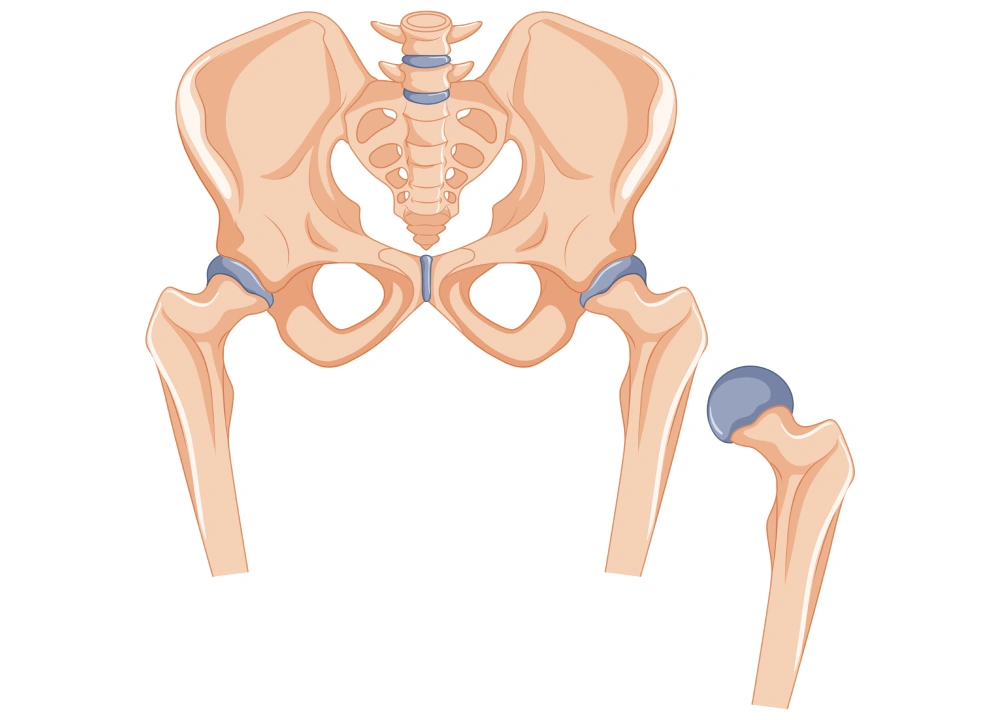The hip joint is a ball-and-socket joint. The femoral head (the top of the femur bone) is the ball; and, the part of the pelvis bone – acetabulum forms the socket. A ring of cartilage on the socket is the labrum. It helps keep the bones of the hip joint in place as you move. An injury to this labrum is known as the labral tear of the hip. Labrum cushions the hip joint. It also acts like a rubber seal to hold the thighbone securely in the hip socket and assist in frictionless motion by keeping the joint fluid inside.
Labral tears are common in people who play golf, football, soccer, and hockey. It can also occur due to structural problems in the hip joint.
Types of Labral Hip Tears
A tear can occur anywhere along the labrum. Depending on the part of the affected joint, hip labral tears are classified as anterior or posterior tears.
Anterior Hip Labral Tears: This type of tear occurs on the front of the hip joint
Posterior Hip Labral Tears: This type of tear occurs on the back of the hip joint.
What are the symptoms of hip labral tear?
Irrespective of the cause and type, the symptoms associated with hip labral tears look similar. However, you may feel symptoms differently depending on the location of the tear – whether it is in the front or back of the hip labrum.
Symptoms include:
- Restricted hip joint motion
- Stiffness in the hip joint
- Pain in the buttocks, groin, or hip joint when you walk, run, sit idle, or sleep
- A locking or clicking sensation in the hip joint when you move
- Some hip labral tears go unnoticed for years as they do not cause any symptoms.
Causes of hip labral tear
- Regular wear and tear of the hip joint
- Overuse of hip joint, repetitive hip motions
- Traumatic hip injuries
- Indulgence in some sports and occupations
- Abnormal hip bone shape, hip dysplasia, and other deformities of the hip joint
Anterior hip labral tears are associated with sports such as hockey, football, golf, and ballet. Whereas traumatic injuries, high-impact sports injuries, accidents, or falls can lead to posterior hip labral tears.
Diagnosis of Hip Labral tears
An orthopedic doctor physically examines the patient to assess whether the patient has inflammation, swelling, and pain in the hip joint with movements.
The doctor may order an X-ray to detect abnormalities in the alignment and shape of the hip joint and also to see the signs of arthritis. To have a clearer view of the tissue surrounding the hip joint including the hip labrum, the doctor may order an MRI scan as well.
Treatment of the Hip Labral Tears
Minor hip labral tears not causing severe pain or restricting movement, can be managed without requiring surgical repair. In some cases, an orthopedic doctor provides nonsurgical treatments first, but when the labral tear and pain are severe, surgical repair remains the best option.
Non-surgical treatments include over-the-counter medications to manage pain, and inflammation, rest, activity modification, physiotherapy, and injection use.
Surgery
When nonsurgical options do not provide any relief from pain, your orthopedic doctor may recommend surgery. The common procedure to repair labral tears is orthoscopic surgery. The procedure is minimally invasive with a faster recovery period.
If you have any concerns with your hip joint with severe pain and walking difficulty, meet Dr. Praharsha Mulpur.


